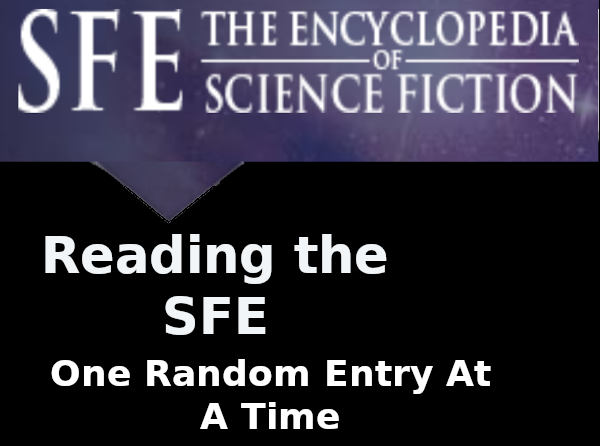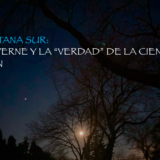
The short story format doesn’t always work well when utilizing the frame narrative, yet you can count on Arthur C. Clarke to buck that trend with his delightful short Hide and Seek. Not only does it work here, but it takes two distinctly different stories and blends them together in a cohesive journey that readers can grab on to from the beginning and enjoy simultaneously.
If you’re not familiar with the frame narrative, it is a writing device that is kind of like telling multiple stories within the same body of work, where the first one sets the stage for the other (or others, in some cases). In short fiction, this technique often limits the writer’s ability to build on each element with enough prose to make either or any portion substantial enough to maintain interest.
The two interior illustrations (above and below) show the distinct differences between the two stories that make up Hide and Seek. In this case, Clarke ties them together nicely and gives the reader a lot more to think about by doing so.
 Hide and Seek first appeared in the September 1949 issue of John W. Campbell Jr’s pulp classic Astounding Science Fiction from Street & Smith Publication. The edition reviewed here was found in the 1978 Puffin Publishing anthology “The Worlds of Arthur C. Clarke – Of Time and Stars.”
Hide and Seek first appeared in the September 1949 issue of John W. Campbell Jr’s pulp classic Astounding Science Fiction from Street & Smith Publication. The edition reviewed here was found in the 1978 Puffin Publishing anthology “The Worlds of Arthur C. Clarke – Of Time and Stars.”
The frame element of the story is set during the return trip of a hunting excursion in which the character Kingman recounts a “very peculiar experience” that had happened during the Second Jovian War. After a squirrel evades becoming dinner, the hunters retire to a nearby cabin and begin to chat. From here, we jump back in time in space near Mars (if a million kilometers counts).
K.15 is a military operative trying to rendezvous with his friends as the enemy cruiser Doradus closes in on him for the capture. With danger just six hours behind, K.15 escapes to the surface of the moon Phobos while his ship continues on its original course, hopefully drawing the enemy vessel away. But the antagonist commander begins probing the small rock orbiting Mars and the cat-and-mouse Hide and Seek game begins.
The science behind maneuvering in space, traveling across an odd shaped moon, and the probable technological advancements used for a future interstellar manhunt are precise and true to the Clarke form in believability. And thought the characters are purposefully cryptic in design, it is easy for the reader to feel compassion for both hero and villain. In the end, we are left with a slew of questions while still being satisfied how the story turns out.
The connecting link between the two stories is the comparison of K.15’s allusiveness from capture and the tree squirrel’s quick wits avoiding fate. But what really stands out is the regression in lifestyles. It is intriguing how a society with interstellar space flight capabilities can have people living off the land to survive. And the fact that the primitive lifestyle is a current time perspective while the space adventure is one of history, it makes one wonder just what went wrong.

It should also be noted that the narrator of the frame story admits to changing the names to protect the character’s true identities. This illusive tool allows readers to continue with the story without questioning the character’s motives of action. It also allows the reader to wonder if the narrator is the K.15 character or the commander of the search vessel.
By combining so many important elements into such a short story (abt 4500 words), it’s surprising that Arthur C. Clarke was able to make the frame narrative work. Or maybe it’s simply because of this tricky format that the story – or stories – work. No, it’s more likely that the Hide and Seeks works because it was written by Clarke.











I never got the impression that the spaceflight society had “regressed” to subsistence hunting. The frame story has always seemed to me to be one of slightly upperclass folks having a country sporting weekend — a common feature of English life up to and even a little beyond the time period during which Clarke wrote the story. And even in the impending 2020s, plenty of American folks in my neck of the woods will go off for a weekend of potting squirrels.